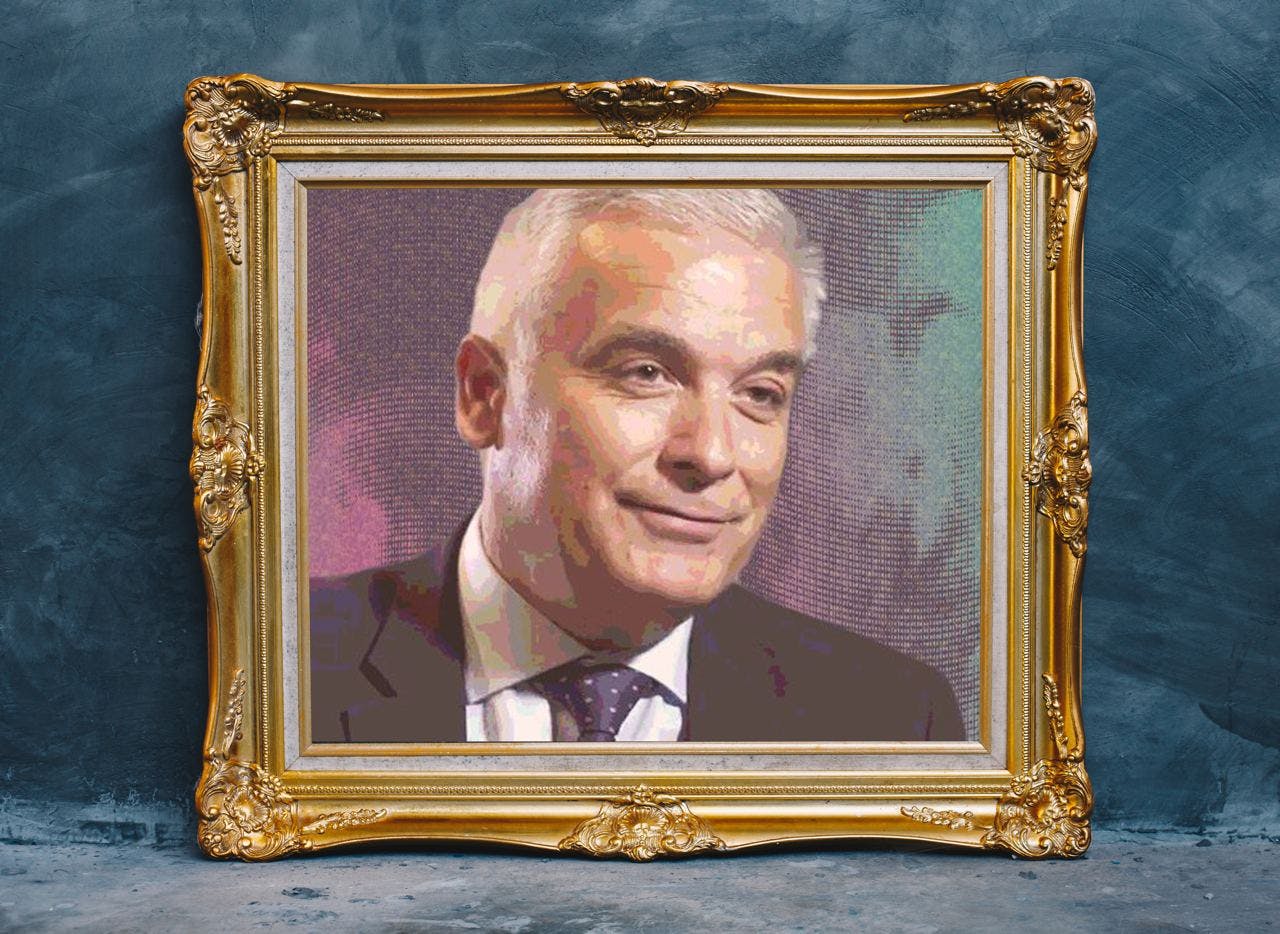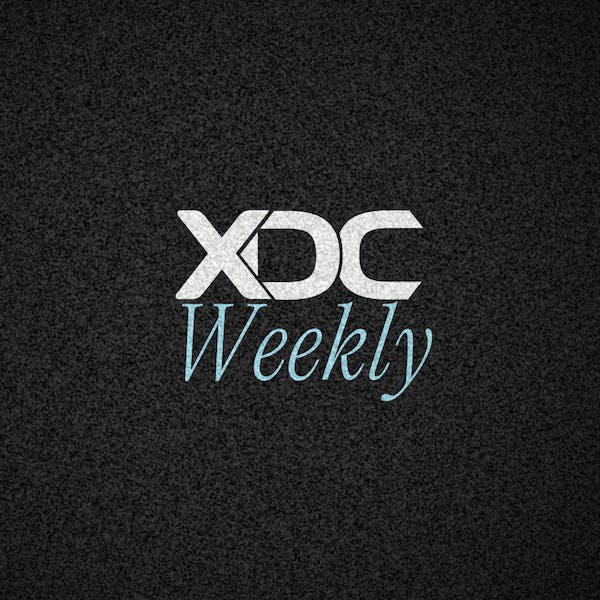Before he became one of the top advocates for the digitization of global trade, André Casterman’s curiosity was sparked by a world map that his parents put in his room when he was a young child.
But it really sent Mr Casterman on his trajectory when a computer club came to his village in Belgium around 1981, when he was 13 or 14 years old.
“I thought it was really attractive,” recalled Casterman during his recent appearance on XDC The Stream. “So I signed up for a few classes during the holidays and started getting really excited about programming.”
Back then, access to a computer was rare, as they cost around $15,000. “This computer club allowed me to have access to these nice machines,” he explained.
Not long after, André was spending all his time programming. That same year, Casterman gave up a planned family ski vacation for a HP-41 calculator, the newest technology that the astronauts were using at the time. It cost around $325, which is around $1,000 when adjusted for inflation.
“Those are really the love stories of my teenage years,” joked Casterman. “I don’t have any others to share.”
Once he completed high school, André Casterman decided to study economics at university instead of programming. Already accustomed to the newest technology, he didn’t want to use the old computers from the 1960s that schools in Belgium were still using. Plus, he knew he already had a knowledge base in programming that he could combine with what he would learn in economics.
After college, Casterman became one of the last cohorts to move through mandatory Belgian military service before conscription was ended in the early 90s. Soon after, he used his competencies to land a job at SWIFT in information technology.
SWIFT was a convenient fit for a Belgian, as it operated in Brussels. But as an economics major, what really attracted André to SWIFT was the company’s role in financial services-even if he’d be working on the company’s IT team.
“It was more testing and development, so I was not programming, per se,” explained Casterman. “I was testing programs and supporting the end users.”
After around 8 years in IT, André Casterman wanted to move closer to the actual business, and was able to move from a senior IT position at SWIFT to that of a junior product manager in 1998. The timing for the move made sense, as SWIFT was embarking on IP technologies.
SWIFT embraced the internet protocol, and built an entire TCP IP network in 1998. In 1999, they rolled out the first services using the new technology, providing messaging with central banks and real-time settlement systems. In 2003 SWIFT rolled out file transfer capabilities.
“We knew we had great technology that the industry was building-internet protocol, basically-but we didn’t know what the banks would want to buy from us, so it was really researching what the market wants,” he said.
Around 2004, Castmerman’s focus evolved to the low value payment space-low-value cross border payments, cross-border retail payments, pension payments, and more.
“Twenty years later, SWIFT is still the most global and most secure way to exchange files between banks but also amongst banks, and between corporates and banks,” reflected Mr Casterman, who was a key contributor to SWIFT over those two decades. “We were always complaining back then that [development] was too slow, but looking back, I think it was quite a success story compared to other innovations. The timing was right. That’s the key.”
Eventually, with SWIFT fully integrated into the latest technology, Casterman found his role at SWIFT to be too easy, and he left in 2015. “I was selling file transfer, and with my tech background, I knew that file transfer is something so basic,” said Casterman, who thought trade finance looked more complex than moving money.
“In trade, we credit first, so we lend money, and then we hope we get it back,” said Mr Casterman. “Of course there are different ways to get it back, but the fact that there is a risk being taken and money being advanced and balance sheets engaging in transactions is what attracted me to trade finance.”
Trade finance is a notoriously slow, antiquated, paper-based system, and André Casterman has been at the forefront of its digitization. Because of a lack of liquidity, there is a $2.5 trillion trade finance gap. Small and medium-sized enterprises, or SMEs, bear the brunt of this gap, unable to conduct day to day business efficiently.
André Casterman is the Head of Fintech Activities International Trade and Forfaiting Association (ITFA), which describes itself as a trade association for companies, financial institutions, and intermediaries engaged in global trade, forfaiting, supply chain, and receivables. Its 300 members include banks and other financial institutions.
“What an association can do that others can’t is really deliver to regulators a unique voice that represents an entire industry,” said Casterman.
Regulators are a key part of the modernization of global trade for obvious reasons. If regulators don’t approve new instruments and processes, they can’t be legally used. But Mr Casterman talks about regulatory bodies as more of a partner than a hindrance.
“I think regulators are great catalysts for technology innovators because they create markets,” said Casterman, who seems to embrace rules and standardization.
In 2020, Casterman began engaging with the Abu Dhabi global market, a relatively small but very ambitious government in the area of digitization and innovation. They were one of the first governments to adopt the model law for electronic transferable records, back in February of 2021.
André says smaller governments tend to be more aggressive in their approach towards modernization, and the same applies to small companies.
“When you are looking at alternative lender startups, they are often starting from a blank sheet of paper and with no market,” said Casterman. “So they are hungry for market share, and they are very open to the latest technologies.”
But when large organizations and governments embrace change, it’s a really big deal. In September of 2023, an English law was passed that allows for digitization of existing trade instruments. Between 60 and 70% of global trade is governed by English law, according to Casterman.
“Banks are just discovering what the new law enables them to do,” he explained.
While the US has been notoriously slow in terms of providing regulatory clarity, and finds itself 5 or 6 years behind some other jurisdictions, André Casterman thinks it won’t be long until the US addresses the issue.
“The digital asset space is going to impact all industries, including fine art and gold. Tokenization is going to enable investment products to be created, and for money to move more easily, increasing financial inclusion,” said Casterman. “All of those innovations are going to become more and more concrete in other regions like the UK, Europe, the Middle East, and Asia. So, the US will follow suit.”
Listen to the full interview with André Casterman on XDC The Stream here.

